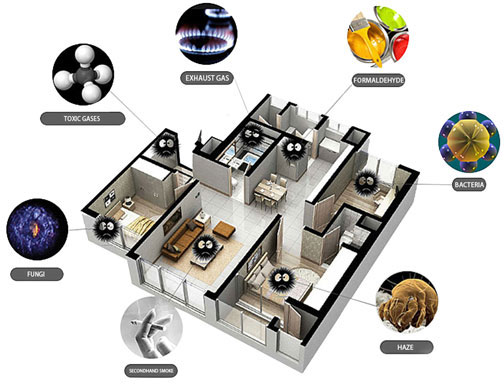
Residential Ventilation
Ventilation technology has a long history and has gradually developed alongside the changes brought about by the evolution of industries and buildings as well as changes in our personal needs.
Ventilation technology has a long history and has gradually developed alongside the changes brought about by the evolution of industries and buildings as well as changes in our personal needs.
The primary purpose of all buildings is either to house people or to provide suitable spaces where activities of different kinds can be pursued. To achieve this, the indoor climate must be such that the occupants can experience comfort and avoid being subject to health hazards. Importantly, the quality of the indoor air must be maintained an acceptable level, which means, among other things, being totally void of smells and any substances that could lead to health risks.
Standards for residential buildings
ASHRAE now recommends ventilation rates dependent upon floor area, as a revision to the 62-2001 standard, in which the minimum ACH was 0.35, but no less than 15 CFM/person (7.1 L/s/person). As of 2003, the standard has been changed to 3 CFM/100 sq. ft. (15 L/s/100 sq. m.) plus 7.5 CFM/person (3.5 L/s/person).
What is PM, and how does it get into the air?
PM stands for particulate matter (also called particle pollution): the term for a mixture of solid particles and liquid droplets found in the air. Some particles, such as dust, dirt, soot, or smoke, are large or dark enough to be seen with the naked eye. Others are so small they can only be detected using an electron microscope.
Sources of PM
These particles come in many sizes and shapes and can be made up of hundreds of different chemicals.
Some are emitted directly from a source, such as construction sites, unpaved roads, fields, smokestacks or fires.
Most particles form in the atmosphere as a result of complex reactions of chemicals such as sulfur dioxide and nitrogen oxides, which are pollutants emitted from power plants, industries and automobiles.

Why Are PM2.5 Dangerous
Since they are so small and light, fine particles tend to stay longer in the air than heavier particles. This increases the chances of humans and animals inhaling them into the bodies. Owing to their minute size, particles smaller than 2.5 micrometers are able to bypass the nose and throat and penetrate deep into the lungs and some may even enter the circulatory system.
Studies have found a close link between exposure to fine particles and premature death from heart and lung disease. Fine particles are also known to trigger or worsen chronic disease such as asthma, heart attack, bronchitis and other respiratory problems.
